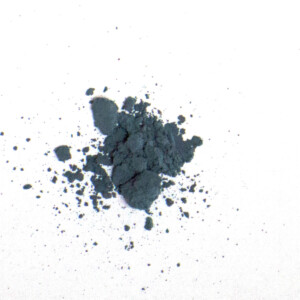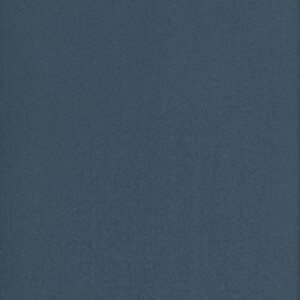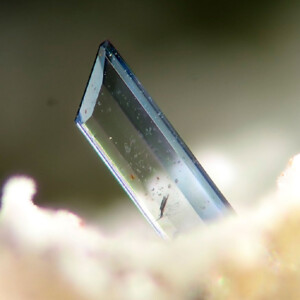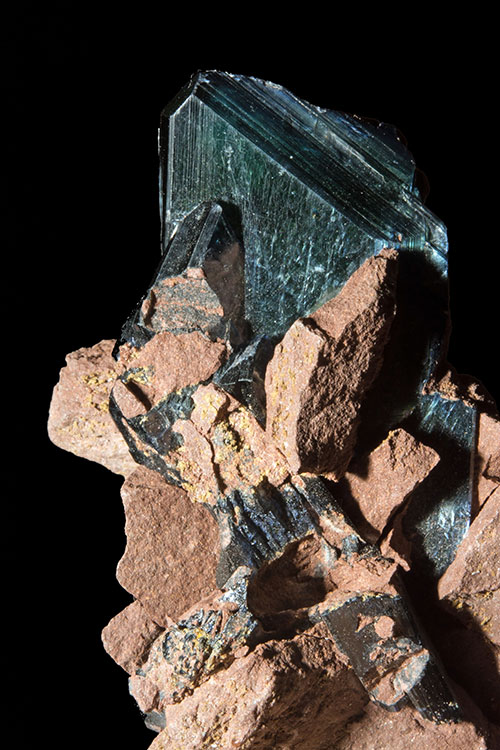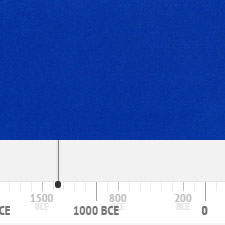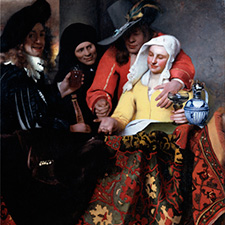Vivianite
Natural inorganic pigmentComposition and Properties of Vivianite
The chemical composition of this natural pigment: hydrated iron phosphate with the formula of Fe3(PO4)2 · 8H2O. On exposure to air, the Fe2+-ions can be oxidized to Fe3+ which causes a color shift towards darker blue and blue-green.
Names
Alternative names
Blue ochre
Word origin
Named after either John Henry Vivian, a Welsh-Cornish politician, mine owner and mineralogist living in Truro, Cornwall, England, or after Jeffrey G. Vivian, an English mineralogist.
From Wikipedia
Vivianit
German
Vivianite
French
Blu de Vivianite
Italian
Vivianita
Spanish
Preparation of Vivianite
The pigment is prepared from naturally occurring mineral by breaking, grounding and purifying. The whole process is shown in the video from Master Pigments below.
Video: 'Vivianite Pigment' by Master Pigments
History of Use
It was used as a pigment since antiquity but its use in oil painting remained rare.
Vermeer, The Procuress, 1656
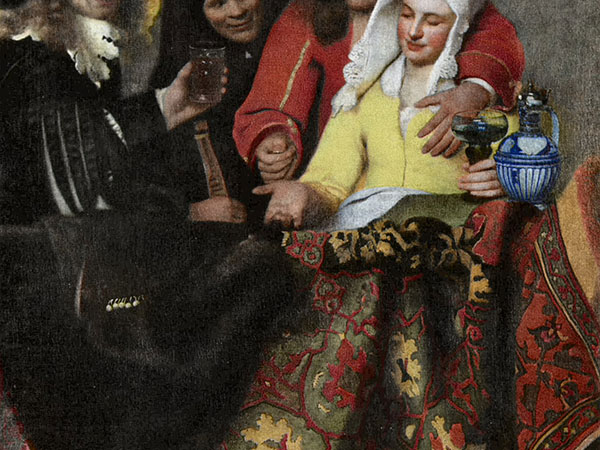
The green part of the tablecloth, lower edge: lead white, smalt and small amounts of lead-tin-yellow. As a result of a recent pigment analysis in 2001 (2) a new pigment rich in iron and phosphorus has been found in the grey-blue areas of the table cloth. The scientists of the Doerner Institute conducting the analysis identified this pigment as vivianite (iron phosphate).
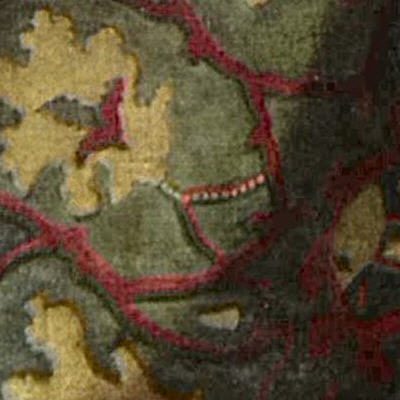
References
(1) H. Stege, C. Tilenschi und A. Unger. Bekanntes und Unbekanntes – neue Untersuchungen zur Palette Vermeers auf dem Gemälde „Bei der Kupplerin“. In: Uta Neidhardt und Marlies Giebe (Ed.), Johannes Vermeer – Bei der Kupplerin, Ausstellungskatalog Dresden 2004, pp. 76-82.
(2) Mark Richter: Die Verwendung von Vivianit in der farbigen Fassung und Malerei des Barock und Rokoko. In: Michael Kühlenthal (Hrsg.): Historische Polychromie. Hirmer, München 2004.
(3) Marika Spring, “Pigments and Colour Change in the Paintings of Aelbert Cuyp“, Aelbert Cuyp (exhibition catalog: Washington, National Gallery of Art 7.10.2001-13.1.2002). Ed. Arthur K. Wheelock Jr. Amsterdam, London 2001-2002. 65-73.
(4) Jonathan Janson, Essential Vermeer website: Rare or Unidentifiable Pigments: Schijtgeel & Vivianite.
Identification
Infrared Spectrum
Raman Spectrum
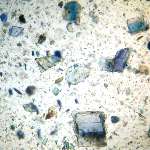
Microphotograph
image © Volker Emrath
Further Reading
References
(1) David A. Scott, Eggert, Gerhard, The vicissitudes of vivianite as pigment and corrosion product, Reviews in Conservation, Volume 8, p.3-13 (2007).
(2) S. Muntwyler, J. Lipscher, HP. Schneider, Das Farbenbuch, 2nd. Ed., 2023, alataverlag Elsau, pp. 54-55.

